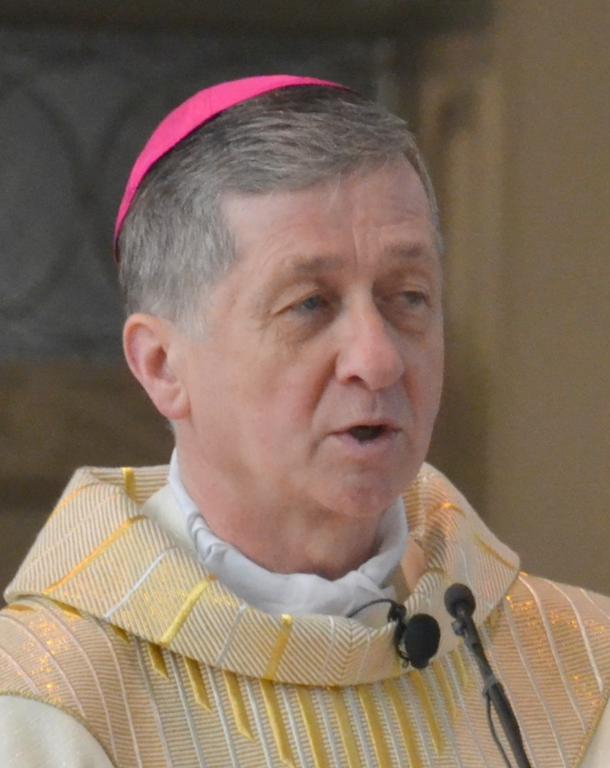Cardinal Cupich’s KPIs

Key Performance Indicators, that is.
Look, Cardinal Cupich, as Archbishop of the Archdiocese of Chicago, is the “top pastor” but he is also the CEO of the archdiocese, bearing responsibility for all the operations of the archdiocese. In fact, while he has oversight over every pastor and every parish in the archdiocese, the level of oversight exercised by the Pope is very weak. Perhaps, as an analogy, the Pope is the Warren Buffett of the Church, because Buffett famously takes a very hands-off approach to the companies that comprise Berkshire-Hathaway. What’s more, there is no Board of Directors to terminate and replace bishops except in extreme circumstances when parishes beg the Vatican for relief from corruption or incompetence.
But if Cupich were subject to a performance review, and had a set of goals he had to manage towards, what would those goals be?
Let’s start with financial goals:
It should be obvious that he should manage the Archdiocese so that the Pastor Center stays out of debt. There’s a revenue side to this, of course, which is partly a bigger picture deserving of its own goal but also the question of whether revenue is lost due to disgruntled parishioners. But there’s also controlling expenses, everything from keeping administrative costs low and modernizing technology, to keeping Cupich’s personal expenses in check, for instance, the frequency of his flights to Rome or travel to D.C. for a political agenda. According to the most recent Annual Report, the archdiocese had an operational loss of $21.7M, about 7.5% of expenses. It turns out that one line item is pretty much a direct pass-through for the parishes, and that’s insurance, with revenues of $121.7M and expenses of $122.8M; if we exclude this, the operational loss would be about $22.7 and net expenses would be $160.9M, so that the loss is about 14% of annual expenses, which hardly seems sustainable.
But there’s a second financial goal that any sensible organization would have, and that’s financial transparency, and it turns out that the “most recent annual report” is the 6/30/2023 fiscal year-end report, issued on December 15, 2023. This means, by some simple math, that the FY 2024 report is nearly half a year overdue. This delay would not be accepted by any publicly-traded company but as a church, they are exempt. Or perhaps, what would be even worse, the financial health of the archdiocese has worsened and they don’t want it publicly known while in the middle of a large fundraising campaign, especially since there is no mechanism to transparently account for how the funds collected from the parishes are being used.
Here’s another goal, around organizational structure: avoid excessive administrative top-heaviness.
Currently, there are 7 auxiliary bishops, one of them the Vicar General and the remaining six appointed for six different Vicariates. But it turns out, five of them were ordained just this past February, and before that, there were only three Vicariates in 2024. Now, it may be that prior to the new ordinations, the vicariate/administration was understaffed, and it’s not quite clear based on this map whether the vicariates were temporarily combined and 7 bishops is actually the norm, but at a point at which every priest is needed to be actively ministering, having 7 administrators seems very top-heavy, all the more so since the vicariates seem very imbalanced in their sizes, assuming they aren’t regularly adjusted.
Which brings me to my third category: recruitment and retention. Yes, Cupich is performing appallingly in this respect.
Excluding the seminarians associated with St. John Cantius, the Traditional Latin Mass community which exists “on its own,” here’s a simple comparison of the Archdiocese seminarians vs. those at the Archdiocese of Milwaukee, by year, where Year 4 are the newly-ordained priests:
Year 4
- Chicago: 1
- Milwaukee: 3
Year 3
- Chicago: 3
- Milwaukee: 6
Year 2
- Chicago: 3
- Milwaukee: 6
Year 1
- Chicago: 4
- Milwaukee: 6
Of note, there are three seminarians with the Home Parish listed as St. Gilbert in Grayslake (one a Cantian).
Bear in mind that the total Catholic population in the Archdiocese of Chicago is 1.9 million. That’s almost exactly 3 times the Catholic population of the Archdiocese of Milwaukee.
Now, I’m sure there are a variety of reasons why Chicago struggles and Milwaukee succeeds, but I’ve read periodically that that seminarians don’t just stay in their hometowns, but are often either attracted by a particular diocese or else are rejected by liberal dioceses for being excessively traditional or just too nerdy or weird in the eyes of the bishop or his staff. Not to mention, of course, all the ways in which a bishop/archbishop should be leading their flock to inspire vocations. And, of course, to have only a single new priest while simultaneously pulling 3 priests not to replace retiring or reassigned auxiliary bishops but simply to (re?-)expand their number, leaves parishes even more short-handed.
Regular readers will recall that back in January, I lamented the endless “capital” campaigns coming from the Archdiocese, and I’m not any more convinced the money would be spent prudently and with disclosure. With Cupich at the helm, running the archdiocese at a deficit, failing to disclose finances promptly, creating a top-heavy administration, and failing in the key challenge of encouraging vocations, I just don’t believe there’s sufficient track record for any “capital” fundraising to be spent in ways that are worthy of the amount of money that’s being requested/required of parishes.












